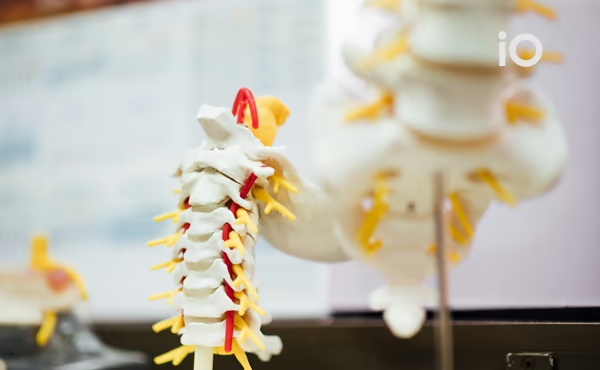Spinal stenosis refers to the narrowing of the spinal canal, where the spinal cord resides, due to ageing and wear over time. This condition significantly impacts the quality of life for many patients, and in some cases, surgical intervention becomes unavoidable.

Spinal stenosis surgeries are typically performed on elderly patients, many of whom also have comorbidities. Common conditions include hypertension and diabetes, while other chronic illnesses such as kidney failure, heart disease, and lung issues can negatively affect the success rates of these surgeries.
In elderly patients, the primary goal of spinal stenosis surgery is to widen the narrowed canal using microscopic or endoscopic techniques and to relieve pressure on the spinal cord. However, during this procedure, the anatomical structure of the spine may be altered, and excessive bone and ligament loss can lead to abnormal movement between vertebrae. To prevent this and improve success rates, stabilisation of the spine using pedicle screws and metal rods may be necessary. However, the use of screws and implants in elderly patients not only extends surgery time but also increases the risk of complications such as infections.
In some specific cases, scientific studies have shown that surgeries involving implants have higher long-term success rates compared to non-implant surgeries. These cases include patients with severe deformities (flat back, scoliosis, kyphosis), vertebral slippage that causes significant instability, or situations where extensive bone removal is required to relieve pressure on the nerve roots and spinal cord.
For patients whose general health, comorbidities, and bone quality are suitable for implant-based surgery, stabilising the spine while relieving nerve compression is the preferred approach. However, in patients with significant health risks, opting for non-implant surgeries may reduce the risk of complications, even in the presence of these specific conditions.
Non-implant surgeries are performed using microscopic or endoscopic techniques. The key consideration in both approaches is to widen the spinal canal while preserving the anatomical integrity of the spine as much as possible.
Advantages and Disadvantages of Different Techniques
Both techniques have their respective advantages and disadvantages.
In the microscopic technique, a partial laminectomy (removal of bone and thickened ligament tissue from the back of the vertebra) is typically performed from one side (either the right or left of the spine). This procedure alleviates pressure on both sides of the nerve roots and the spinal cord. One advantage of the unilateral microscopic technique is that it preserves the muscles, ligaments, and bony structures on the opposite side of the spine. The most significant benefit of this technique is that it provides the surgeon with a better view, especially in cases of multi-level stenosis, and allows for easier repair in the event of dural tears (spinal cord membrane damage).

